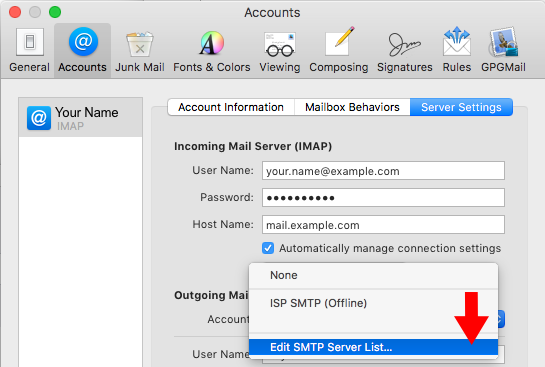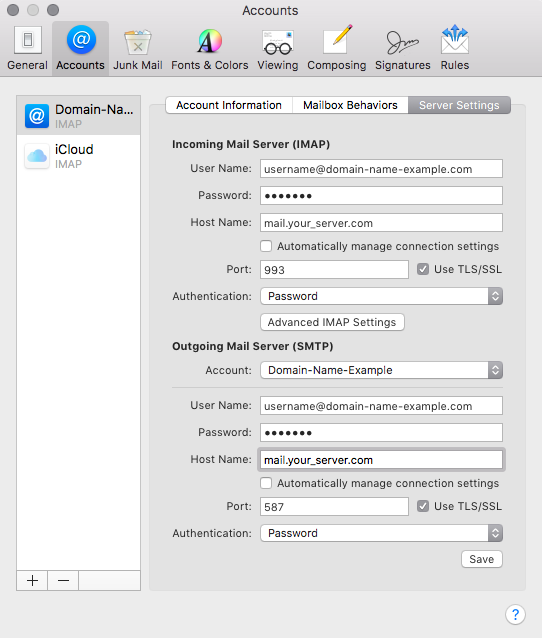
Back at the service configuration screen, click on the plus sign (“+”) and provide a type of location, an address, a delegate, a name for the location, whether or not invitations to the resource are accepted and then enter the account name for any accounts that can manage the location’s calendar (they will auto-complete, so there’s no need to remember users and groups exactly). Then click on the Next button.Īt the Mail Account Summary screen, review the settings and if correct, click Finish.

Then click on the Next button.Īt the outgoing mail server screen, provide the Outgoing Mail Server address, the port, whether or not SSL is in use (it should be if possible), the password protocol, the user name and the password. Provide the email address and then click on the Next button.Īt the Configure Server Email Address screen, provide the type of incoming mail service in use, provide the address of the mail server and then the port number used, if not a standard port for HTTPS-based IMAP (or POP if you’d prefer), the user name and the valid password for the account. Once open, click on Enable invitations by email to enable email notifications of invitations in the Calendar Server. To enable the Calendar service in macOS Server 5.4, first open the Server application and click on Calendar in the SERVICES section of the sidebar. The Calendar Server is a CalDAV Server, leveraging HTTP and HTTPS, running on ports 80 respectively.

Configuring Calendar Server in macOS Server 5.4 (running on High Sierra) is a fairly simple and straight forward process.


 0 kommentar(er)
0 kommentar(er)
